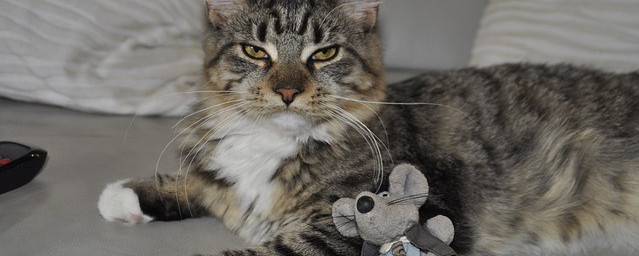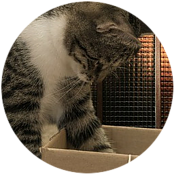
What is catnip and how does it affect cats?
Catnip, scientifically known as Nepeta cataria, is a herb that belongs to the mint family. It contains a compound called nepetalactone, which has a powerful effect on most cats. When cats come into contact with catnip, whether by sniffing or ingesting it, they often display a range of behaviors, including rolling, rubbing, purring, and playful antics. This response is due to the chemical reaction that occurs in the cat’s brain when exposed to nepetalactone.
Not all cats are affected by catnip, as the sensitivity to its effects is determined by genetics. Approximately 50-75% of cats are susceptible to the allure of catnip, while others show no response at all. Kittens under the age of three months also tend to be unaffected by catnip. The reaction to catnip is believed to be an inherited trait, with some cats lacking the necessary receptors in their brain to be affected by the compound.
The history of catnip and its use in cat toys
Catnip has a long history of use with felines. It is native to Europe and was introduced to North America by early settlers. 
The herb was commonly used in folk medicine to treat various ailments in humans, such as headaches and insomnia. However, its effect on cats was discovered by chance.
In the 18th century, catnip gained popularity as a recreational herb for cats. It was noted that cats would exhibit playful and euphoric behaviors when exposed to the plant. This discovery led to the development of catnip-infused toys, which are now widely available in the market.
The pros of using catnip cat toys
Catnip cat toys offer several benefits for both cats and their owners. Firstly, they provide a source of mental and physical stimulation for indoor cats. Cats are natural hunters, and interactive play with catnip toys allows them to engage in their predatory instincts. This can help alleviate boredom and prevent behavioral issues caused by a lack of stimulation.
Secondly, catnip toys can be a useful tool for training and behavior modification. When used as a reward, catnip can reinforce positive behavior and encourage cats to engage in desired activities. It can also help redirect destructive behaviors, such as scratching furniture, towards more appropriate outlets.
Lastly, catnip toys can be a great way to bond with your cat. The interactive play sessions they provide create opportunities for quality time and can strengthen the human-animal bond. It’s a win-win situation as you both have fun and enjoy each other’s company.
The consof using catnip cat toys
While catnip cat toys have their benefits, there are also some potential drawbacks to consider. Firstly, some cats may become overly dependent on catnip for stimulation. If a cat becomes reliant on catnip toys for entertainment, they may lose interest in other toys or activities. It’s important to provide a variety of toys and play options to prevent this dependency.
Furthermore, excessive exposure to catnip can lead to habituation, where the cat becomes less responsive to its effects over time. To avoid habituation, it’s recommended to limit access to catnip toys to short, supervised play sessions. This will help maintain the novelty and effectiveness of catnip as a stimulating tool.
Lastly, some cats may have adverse reactions to catnip. While rare, some cats may experience digestive upset, such as vomiting or diarrhea, after ingesting large amounts of catnip. It’s crucial to monitor your cat’s response to catnip and discontinue its use if any negative symptoms occur.
Alternatives to catnip cat toys

If your cat doesn’t respond to catnip or if you prefer to try alternative toys, there are several options available. Silvervine, a plant native to Asia, has a similar effect on cats as catnip. Many cats who are unaffected by catnip are responsive to silvervine. Valerian root is another herb that can have a stimulating effect on cats.
Additionally, interactive toys such as puzzle feeders, feather wands, and laser pointers can provide mental and physical stimulation for cats. Each cat is unique, so it may take some trial and error to find the toys that your cat enjoys the most.
How to choose the right catnip cat toy for your cat
When selecting a catnip cat toy, there are a few factors to consider. Firstly, ensure that the toy is made from safe and durable materials. Cats can be rough with their toys, so it’s important to choose toys that can withstand their play.
Secondly, consider the size and texture of the toy. Cats have different preferences when it comes to the texture of their toys. Some may prefer soft plush toys, while others may enjoy toys with different textures or materials, such as crinkle or sisal.
Lastly, pay attention to the potency of the catnip. Some toys may contain a higher concentration of catnip, which can be overwhelming for some cats. It’s best to start with toys that have a moderate amount of catnip and observe your cat’s response. You can always increase or decrease the amount of catnip based on your cat’s preference.
Tips for using catnip cat toys effectively
To maximize the benefits of catnip cat toys, here are some tips for effective use:
- Rotate toys: Cats can quickly lose interest in toys that are always available. Rotate their toys regularly to keep them engaged and prevent boredom.
- Supervise playtime: While catnip toys are generally safe, it’s important to supervise your cat during play to prevent any accidents or ingestion of non-edible parts.
- Use catnip as a reward: Incorporate catnip toys into training sessions as a reward for desired behavior. This will reinforce positive behavior and make the playtime even more enjoyable for your cat.
- Store catnip toys properly: To maintain the freshness and potency of catnip toys, store them in a sealed container or bag when not in use.
Common misconceptions about catnip cat toys
There are a few common misconceptions surrounding catnip cat toys that need to be addressed. Firstly, catnip is not addictive for cats. While they may enjoy the effects of catnip, it does not create a physical dependency or withdrawal symptoms.
Secondly, catnip is safe for cats when used in moderation. However, it’s essential to monitor your cat’s response and discontinue use if any adverse reactions occur.
Lastly, not all cats are affected by catnip. If your cat shows no response to catnip toys, don’t worry. There are plenty of other toys and activities that can stimulate and entertain your feline friend.
Conclusion
In conclusion, catnip cat toys can be a valuable addition to your cat’s toy collection. They offer mental and physical stimulation, can aid in training and behavior modification, and provide an opportunity for bonding with your cat. However, it’s essential to consider the potential drawbacks and monitor your cat’s response to catnip.
If your cat doesn’t respond to catnip or if you prefer to explore other options, there are various alternative toys available. Remember to choose toys that are safe, durable, and suitable for your cat’s preferences. Ultimately, the decision to use catnip cat toys or not depends on your cat’s individual needs and preferences.